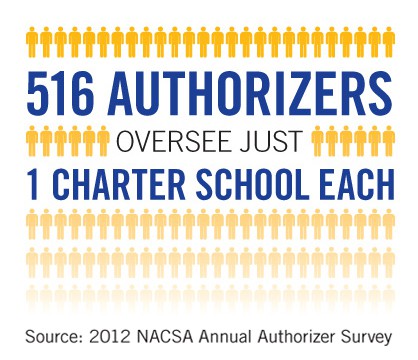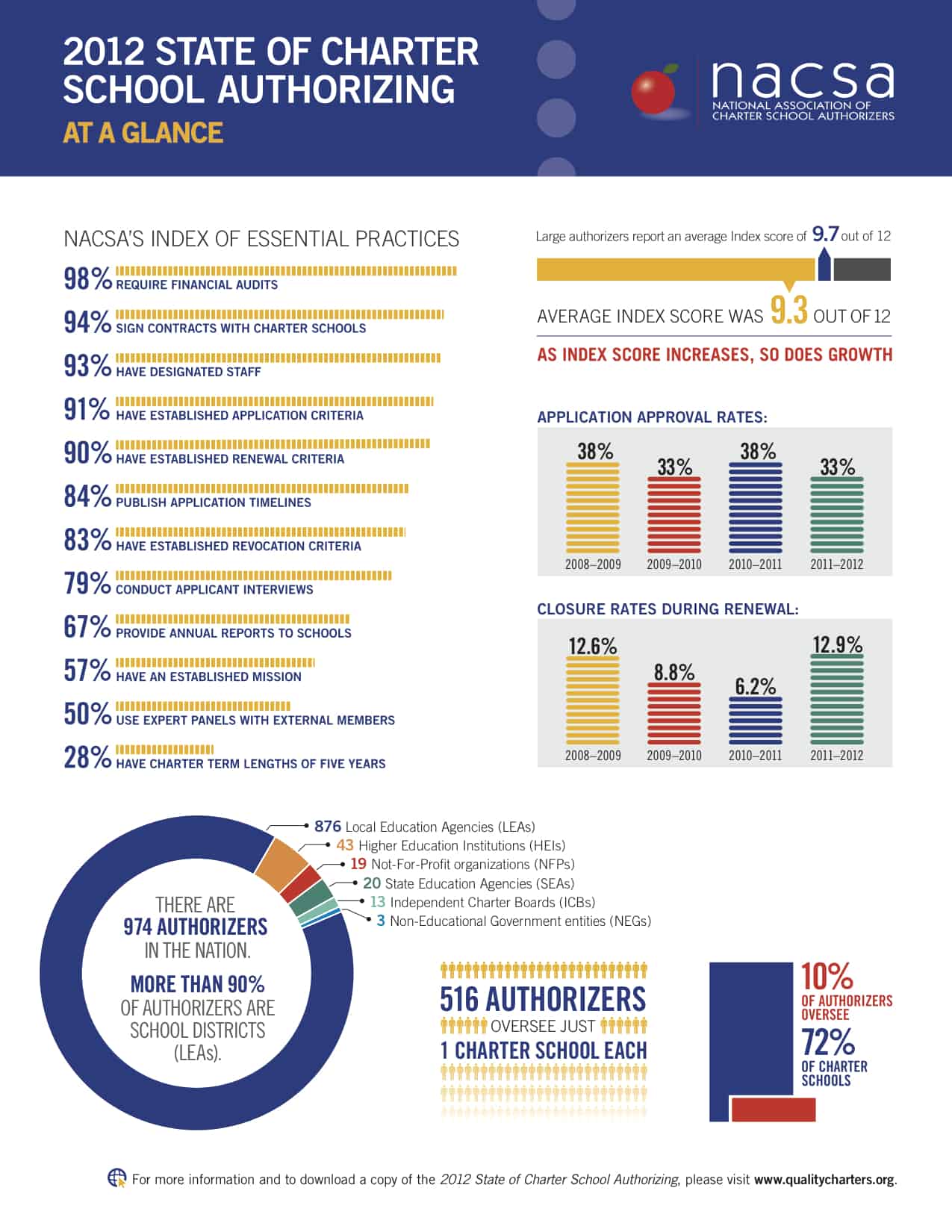Authorizing Great Schools & Encouraging New Models

We know how to open good new schools. We know how to authorize good new schools. As Jim Shelton said at #EIsummit on Wednesday, we should do more of what works.
The National Association of Charter School Authorizers has identified 12 essential practices for the nearly 1,000 school authorizers nationwide. It includes some real basic stuff like, sign a performance contract with each school, publish application timelines, interview the applicants, and set renewal criteria. These common sense practices are worth pointing out because 53% of charters are authorized by local education authorities–and these small authorizers have a higher rate of low performing schools and non-renewals than the big guys that pay attention to best practices.
The good news is that, “More authorizers are adopting practices that will lead to high-performing charter portfolios,” according to NACSA in a report released todary, The State of Charter School Authorizing. They concluded that “States are improving their laws and policies on charter accountability, and some are breaking new ground in holding authorizers accountable for outcomes of their work. A growing number of organizations responsible for authorizing are dedicated full-time staff to the task, and we are making real progress in articulating the skills and attributes needed among authorizing professionals.” (Tom is a member of the NACSA National Advisory Board.)
Proactive authorizing. While many authorizers are getting better at responding to charter proposals, a few are getting proctive. Public Impact, a Raleigh think tank has been helping charter authorizer develop strategies to encourage innovation while also holding applicants and schools to high standards of quality. With Public Impact support, The Indiana Charter School Board (ICSB) issued a request for applications that invites new models with strong potential to accelerate student success.
ICSB encouraged applicants consider next-gen school designs, including those that use “staff roles, technology, compensation structures, and/or other aspects of school design and/or implementation to enable the school to reach more students with excellent teaching” in a financially sustainable model. Public Impact provided a list of innovation resources including Opportunity Culture website and its models of innovative teacher staffing and compensation.
The search for next-gen models builds on ICSB’s record of attracting innovative schools including Carpe Diem Meridian, a blended high school model (discussed in recent profile of Indianapolis) [LINK] as well as elementary innovator Rocketship Education. ICSB will accept another round of applications in August 2013 and plans to continue eliciting innovative proposals that meet high standards.
With the shift to digital, authorizers have the unique opportunity to build on best practices, target underserved regions, and promote innovation. We’ve suggested that states and districts should consider seven pathways that include a fast lane for high performers, support for conversions, and encouragement for innovators.








0 Comments
Leave a Comment
Your email address will not be published. All fields are required.